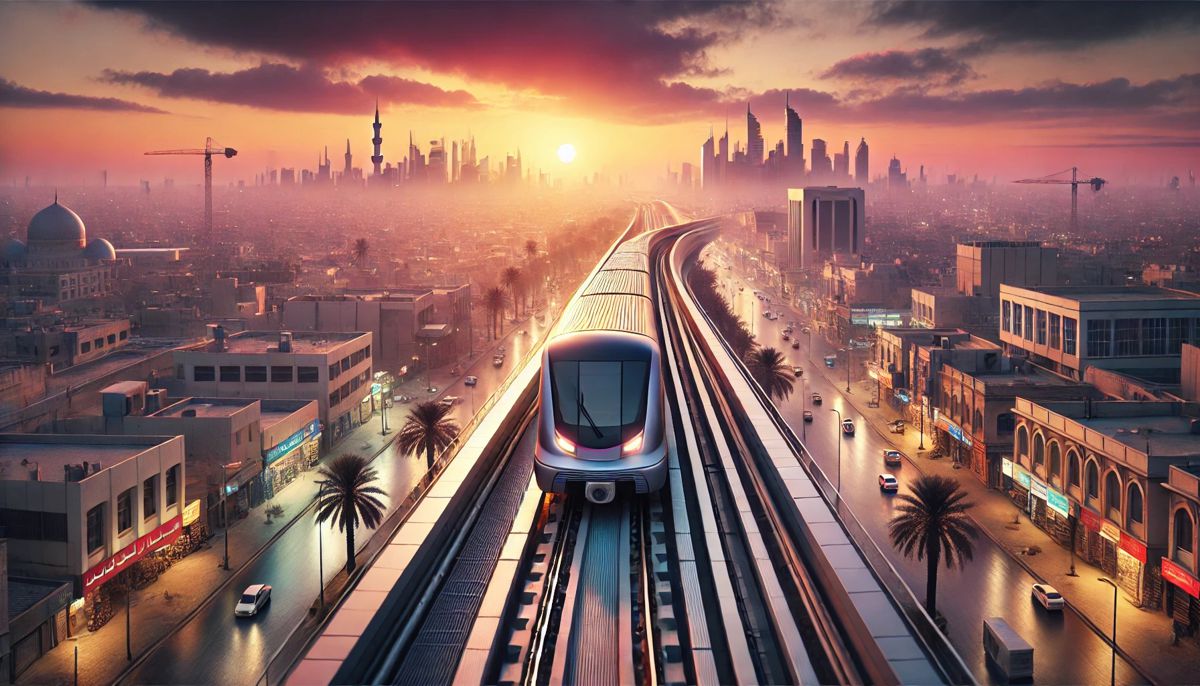Baghdad Metro Rail Project a leap forward for Iraq’s Infrastructure
The Baghdad Metro Rail Project, a colossal undertaking valued at US$17.5 billion, is set to redefine Iraq’s urban landscape, signalling a new chapter in the nation’s pursuit of modernisation.
The project, backed by Iraq’s Ministry of Transport, has recently reached a significant milestone with the appointment of the Vaskhod & Wonter International Capital Coalition, a consortium comprising industry giants from France, Spain, Turkey, and Germany.
This partnership is entrusted with the design, construction, financing, operation, maintenance, and eventual transfer of ownership (DBOMFT) of the Baghdad Metro system—a project that promises to transform the daily lives of millions and boost the nation’s economy.
A Global Collaboration for a National Vision
At the heart of this ambitious initiative is the Vaskhod & Wonter International Capital Coalition, a consortium that represents a powerful blend of international expertise and financial prowess. The coalition includes French engineering and transport specialists Systra and SNCF; Spanish industrial giants Alstom, Talgo, and SENER, Turkish construction firms with vast experience in large-scale infrastructure projects, and Deutsche Bank, the German financial titan, providing the financial backbone for this mega project.
This blend of global expertise underpins the project’s ambitious scope—a 148-kilometre metro network that will weave through the very fabric of Baghdad, connecting its most vital areas and linking it with newly developed cities such as Al-Jawahir, Ali Al-Wardi, and New Sadr City. The network is designed to cover 85% of the city, ensuring that all key urban centres, educational institutions, religious sites, and tourist destinations are accessible, thereby revolutionising urban mobility in Iraq’s capital.
The Baghdad Metro: Past, Present, and Future
The concept of the Baghdad Metro is not a recent development; it traces its roots back to the early 1980s under the regime of Saddam Hussein. Initially conceived as a solution to the city’s growing traffic woes, the project was put on hold due to the Iran-Iraq War. Fast forward to the 21st century, and the dream of a modern metro system in Baghdad is being resurrected with renewed vigour.
In the years following the 2003 Iraq War, Baghdad’s traffic congestion worsened dramatically, exacerbated by the creation of the Green Zone and a surge in car ownership. Recognising the need for a sustainable urban transport solution, city planners and international investors have repeatedly revisited the metro project. In 2008, plans for a two-line metro system were announced, though they stalled due to funding issues. Over the years, multiple agreements and memoranda of understanding were signed with various international players, including Alstom and Hyundai, but the project remained in limbo.
However, the recent appointment of the Vaskhod & Wonter International Capital Coalition marks a turning point. The consortium’s mandate extends beyond mere construction; it encompasses the complete lifecycle of the project, ensuring not just the metro’s creation but its efficient operation and maintenance for years to come.
Key Features of the Baghdad Metro Project
The Baghdad Metro, also known as the Baghdad Elevated Train (BET), is poised to be a cutting-edge rapid transit system featuring both underground and elevated railway sections.
The project’s current scope includes:
- Seven main lines covering a total of 148 kilometres.
- 64 metro stations, strategically located to maximise accessibility.
- Four workshops and depots dedicated to train maintenance and operations.
- Multiple Operations Control Centers (OCC) ensuring seamless management of the metro network.
- Seven Main Power Stations (MPS) with a combined capacity of 250 megawatts, ensuring uninterrupted service.
- Global System for Mobile Communication (GSM) towers, providing robust communication infrastructure.
- State-of-the-art amenities: The metro trains will be fully electric and automated, featuring CCTV for security, internet connectivity, USB charging ports, and dedicated compartments for women, children, and individuals with special needs. The stations will be integrated with other public transport networks, including buses and taxis, and will offer 10 parking facilities for commuters.
- High-speed transit: The metro will operate at speeds ranging from 80 to 140 km/h, significantly reducing travel times across the city.
Once operational, the metro is expected to serve approximately 3.25 million passengers daily, a figure that underscores its potential impact on Baghdad’surban mobility.
The Strategic Importance of the Metro
The Baghdad Metro is more than just an urban transport project; it is a strategic initiative that aligns with Iraq’s broader goals of economic recovery and development. The metro will not only alleviate traffic congestion but also spur economic growth by creating jobs, attracting foreign investment, and improving the overall quality of life in the capital.
Moreover, the project’s emphasis on sustainable and efficient transportation is in line with global trends towards greener urban development. By reducing the reliance on private vehicles, the metro will contribute to lower carbon emissions, a critical step for a country like Iraq, which is grappling with environmental challenges.
The consortium’s involvement in every phase of the project—design, build, finance, operate, maintain, and transfer—ensures that the metro will be built to the highest standards and maintained effectively throughout its operational life. This model not only minimises risks but also ensures that the metro remains a reliable and efficient mode of transport for the long term.
Challenges and Opportunities
Despite the clear benefits, the Baghdad Metro project is not without its challenges. The political and economic instability that has plagued Iraq for decades poses significant risks to large-scale infrastructure projects. Ensuring security during the construction phase and maintaining investor confidence will be crucial.
However, the involvement of an international consortium with a proven track record offers a degree of assurance. Moreover, the project has strong backing from the Iraqi government, which has included it in the national budget, signalling its commitment to seeing the metro through to completion.
The metro’s construction will also provide opportunities for local businesses and workers, fostering skills development and economic diversification. As Iraq continues its journey towards rebuilding and modernisation, the Baghdad Metro stands out as a beacon of progress.
A Promising Future for Baghdad
With construction set to commence in the near future and an expected completion date in May 2029, the Baghdad Metro is on track to become one of the most significant infrastructure projects in Iraq’s history. Its successful implementation will not only transform Baghdad’s urban landscape but also serve as a model for future development projects across the country.
As Iraq looks to the future, the Baghdad Metro represents a bold step towards a more connected, efficient, and modern capital—one that can support the aspirations of its people and contribute to the nation’s long-term prosperity.




















